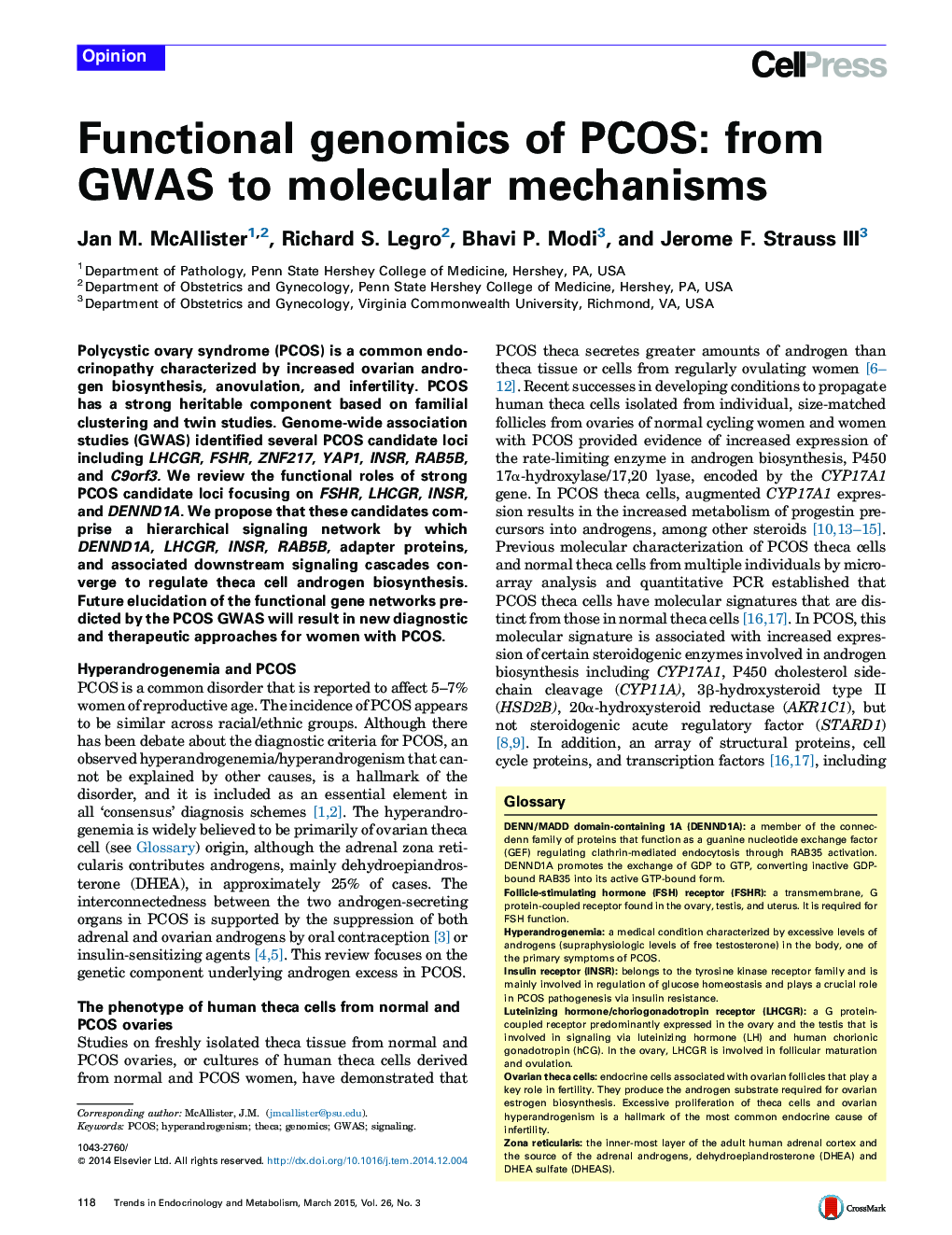| Article ID | Journal | Published Year | Pages | File Type |
|---|---|---|---|---|
| 2810252 | Trends in Endocrinology & Metabolism | 2015 | 7 Pages |
•GWAS have identified FHSR, LHCGR, INSR, and DENND1A as PCOS candidate genes.•Overexpression of DENND1A variant 2 increases androgen biosynthesis in theca cells from normal cycling women, converting them to a PCOS phenotype.•DENND1A, LHCGR, INSR, and RAB5B form a hierarchal signaling network that can influence androgen synthesis.•DENND1A variant 2 is a new diagnostic and therapeutic target for PCOS.
Polycystic ovary syndrome (PCOS) is a common endocrinopathy characterized by increased ovarian androgen biosynthesis, anovulation, and infertility. PCOS has a strong heritable component based on familial clustering and twin studies. Genome-wide association studies (GWAS) identified several PCOS candidate loci including LHCGR, FSHR, ZNF217, YAP1, INSR, RAB5B, and C9orf3. We review the functional roles of strong PCOS candidate loci focusing on FSHR, LHCGR, INSR, and DENND1A. We propose that these candidates comprise a hierarchical signaling network by which DENND1A, LHCGR, INSR, RAB5B, adapter proteins, and associated downstream signaling cascades converge to regulate theca cell androgen biosynthesis. Future elucidation of the functional gene networks predicted by the PCOS GWAS will result in new diagnostic and therapeutic approaches for women with PCOS.
